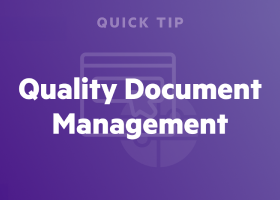How Remote Collaboration Tools Strengthen Your Business
Let’s jump in and learn:
What Is Remote Collaboration?
Remote collaboration is the process of individuals and teams working together from different geographical locations. All types of organizations have widely adopted this working model because of the many benefits that remote collaboration provides, from flexibility and better work-life balance for team members to cost savings and an expanded talent pool for organizations. A variety of remote collaboration tools make this possible and practical.

Despite its benefits, remote collaboration also presents some challenges, such as:
- Blurred boundaries between work and personal life
- Communication breakdowns that occur without face-to-face interactions, resulting in misunderstandings and lags in productivity
- Difficulty creating and nurturing a strong team culture
- Remote workers may feel isolated or disconnected from their teams
- Security risks
What Are Remote Collaboration Tools?
Successful remote collaboration is enabled by many technology solutions that address the challenges and empower distributed teams. Remote collaboration tools facilitate communication and collaboration between distributed team members who often span multiple geographic locations.
These remote collaboration tools help make the remote workforce model work. Remote collaboration tools support everything from managing projects and sharing information to conducting meetings and brainstorming sessions, and streamlining workflows. The following are several of the essential remote collaboration tools that distributed teams depend on to support remote work.
Collaboration
Collaborative solutions provide platforms designed to enable users to work together, regardless of location. These tools integrate several functionalities, such as document sharing, individual and group discussions, collaboration, calendars, whiteboards, video meetings, and chat, to create virtual workspaces.
Communication
Effective communication is vital for remote collaboration. This is enabled using a number of digital tools to share information, stay connected, and make meetings more personal and interactive, such as:
- Instant messaging
- Project management tools
- Video conferencing
Information sharing
Remote collaboration depends on the ability to share documents, files, and other resources efficiently. Cloud-based storage and file-sharing platforms allow teams to share, edit, and comment on documents in real-time. These solutions ensure that authorized users can easily access and share information while maintaining security controls to safeguard the confidentiality, integrity, and availability of data.
Project management
Managing tasks and projects remotely is facilitated by project management tools. These solutions help teams organize tasks, track progress, set deadlines, and allocate resources. This makes it easy for distributed teams to manage projects across different time zones and locations while maintaining workflow transparency.
Document Collaboration Tools
Among remote collaboration tools, those available for document collaboration are essential. These tools allow multiple users to work on the same document simultaneously. Key features of document collaboration tools include the following.
Access control
Document collaboration tools allow administrators to establish and enforce varying levels of access. This ranges from viewing and full editing rights to sharing and printing with the goal of ensuring document security.
Chat and discussion threads
Some document collaboration tools allow users to embed chat and discussion threads into documents. This enables context-specific communication among team members to reduce email exchanges and streamline decision-making processes.
Cloud-based access
Many document collaboration tools are cloud-based, making information accessible from anywhere, on any device with internet access, thus providing increased flexibility and convenience when working with distributed teams on documents.
Commenting and annotation
To support collaborative document development and review cycles, document collaboration tools allow users to insert comments or annotations directly in a document for specific feedback.
Compatibility
Document collaboration systems support various file formats to ensure broad usability and compatibility with different types of content.
Integration
For document collaboration tools that do not provide all-in-one solutions, tools can be integrated for seamless workflows. For example, email, contacts, and calendars can be integrated into other remote collaboration tools.
Notification and alerts
Document collaboration tools have settings that allow users to receive notifications when updates or changes are made to documents.
Offline access
Most document collaboration tools allow users to work on documents offline and then synchronize changes once they have connectivity.
Real-time collaboration
Multiple users can edit documents simultaneously with document collaboration tools. All users’ changes are visible to support real-time editing, commenting, and change tracking.
Search and navigation
Advanced search options are included with document collaboration tools to help users easily find documents as well as text within documents.
Security features
Document collaboration tools offer a number of security options. Commonly, security functionality includes encryption, multi-factor authentication, and audit trails.
Version history
With multiple users working on documents, version history is very important. Version history features are built into document collaboration tools to track and store past versions of documents. This allows users to revert to previous versions if needed and maintains the history of document modifications, which can help with audits and compliance verification.
Time Management Tools
Time management tools help individuals and teams organize their tasks, manage their time effectively, and increase productivity. They aid in prioritizing tasks, tracking time, managing projects, setting goals, and offer valuable productivity and scheduling insights. These tools range from basic to-do list applications to comprehensive project management solutions that can be customized for specific use cases and workflows. Features commonly found in time management tools include the following.
Automated task allocation
Automatically assign tasks based on preset rules.
Calendar integration
Provide a comprehensive, unified schedule view by syncing with users’ other digital calendars.
Collaboration features
Allow teams to coordinate and manage tasks and deadlines.
Customization
Customize the time management tool to meet specific individual or organizational requirements, such as customizing task categories, setting personal reminders, or adjusting the layout. Notifications and alerts can also be customized to remind users of upcoming deadlines or scheduled tasks.
Distraction blockers
Set blocks on websites and applications for predetermined periods to help users focus on projects.
Goal setting
Enables users to set goals, helping them establish a clear direction and milestones for their work.
Integration capabilities
Integrate time management tools with other applications, such as email, project management systems, or communication tools.
Mobile accessibility
Make time management tools available on various connected devices to help users manage their time effectively, no matter where they are.
Prioritization settings
Help users prioritize tasks based on urgency and importance, ranking tasks to ensure that critical activities are completed first.
Project management integration
Some time management tools integrate functionality with project management features, such as the ability to break down large projects into smaller tasks, assign tasks to team members, and track project progress.
Reporting and analytics
Review time usage patterns, productivity levels, progress towards goals, and identify areas for improvement. Advanced tools can track their progress, gamify goals, and celebrate results.
Task lists
Create and manage to-do lists and set priorities, breaking down projects into manageable tasks.
Task scheduling
Schedule reminders for task deadlines, meetings, and other time-sensitive activities.
Time Blocking
Create dedicated blocks of uninterrupted time for specific tasks to maximize focus and minimize distractions.
Video Conferencing
It is not an overstatement to say that video conferencing is one of the breakout remote collaboration tools. It has revolutionized remote collaboration with its accessibility and by offering a rich set of features. Following are several of the many features and functions of video conferencing that enable effective and efficient online meetings.
Chat functionality
A live chat feature enables participants to send text messages during the meeting. The chat feature is commonly used for asking questions, sharing links, or providing additional information to the group or individuals in the meeting without interrupting the speaker. The chat content can be saved and downloaded after the meeting has been concluded.
Hand raising
Video conference participants can be given the option to raise their hand during a meeting. This prevents meeting disruption by giving the speaker a chance to come to a pause point and then giving the person with their hand raised an opportunity to ask a question or comment to the group.
High-quality audio and high-definition video
Video conferencing requires clear audio and video to enable effective communication. High-quality audio features include noise cancellation and echo reduction, while high-definition video provides a higher pixel count for sharp, detailed images.
Integration with other productivity tools
Some video conferencing tools support integration with other tools, such as calendars and email, to help schedule meetings, send invitations to participants, and set reminders.
Live captioning and translation
Some video conferencing tools offer advanced accessibility functionality, such as real-time captioning and translation options.
Meeting recording
Meeting recordings can be enabled with users’ permission. Most video conferencing tools give hosts the option to save the recording either to their cloud or their computer. Additionally, some video conferencing tools offer the option for automatic transcriptions.
Participant management
With video conferencing tools, hosts have control over users’ capabilities, such as the option to determine who can share their screen, mute or unmute participants, remove attendees, and manage participant permissions.
Polls and surveys
Gather real-time feedback with interactive polls and surveys conducted during meetings or webinars. Hosts can create and share questions with participants in real-time, collect responses quickly, and display results either during or after the meeting. Polls and surveys can be customized with simple yes/no questions, multiple-choice questions, or open-ended responses.
Screen sharing and annotation
Video conferencing tools provide capabilities to share presentations, documents, and even computer screens in real-time. Some video conferencing tools allow users to sketch ideas on interactive digital whiteboards and build on each other’s thoughts in the application.
Security features
Video conferencing tools include security features, such as end-to-end encryption, password-protected meetings, and waiting rooms to prevent unauthorized access to meetings and protect sensitive information.
Virtual backgrounds and filters
Some video conferencing tools allow users to change their backgrounds or use filters to maintain a professional appearance when working from home or in a distracting environment.
Virtual breakout rooms
A breakout rooms feature allows hosts to split participants into smaller groups for more focused side discussions and then bring them back to the main meeting.
Team Chat
Team chat tools provide a platform for team members to interact and collaborate in real-time or asynchronously, enhancing team communication, improving workflow, and fostering a collaborative work environment. Key features included in chat tools for both direct and group messaging include the following.
Custom themes, avatars, and emojis
Chat experiences can be customized with corporate branding or special backgrounds. Users can also insert emojis to express personality and humor.
File sharing
Documents, images, videos, and other files can be shared with individuals or groups within team chat tools.
Group chat rooms and channels
Team chat tools offer the option to create dedicated chat spaces for specific teams, projects, or topics. These help keep conversations organized and relevant, helping team members to stay updated and participate in relevant discussions.
Integration
Team chat tools are often integrated with project management and productivity tools.
Mobile access
Team chat tools are accessible on various connected devices, including smartphones, tablets, and computers.
Notifications, mentions, and alerts
Team chat tools allow users and administrators to set up custom alerts for new messages, updates, or mentions.
Search functionality
Users can search team chats to find past conversations and shared files.
Security
Communication and attachments in team chat tools are protected by a number of security features, including end-to-end encryption and multi-factor authentication.
Status indicators
Users can turn on status indicators to let team members know if they are available, busy, or offline.
User Profiles
Personal profiles can be added so users can share contact details and other relevant information.
Voice and video calls
Some team chat tools offer the ability to make direct voice or video calls in addition to text-based messaging.
Online Project Collaboration Tools
Online project collaboration tools are designed to enhance teamwork and productivity. These remote collaboration tools are especially useful when team members are geographically distributed. Several of the key features that are commonly included with these onsite and remote collaboration tools are the following.
Activity streams and updates
Activity streams and automatic updates help team leaders stay informed about project progress with comprehensive updates on the latest developments and accomplishments.
Calendar and scheduling
Personal or team calendars can be integrated to help track project timelines.
Document collaboration
Most project collaboration tools allow multiple users to work on the same document simultaneously, as well as to track changes and allow for real-time feedback and edits.
File sharing and storage
Online project collaboration tools typically provide capabilities for sharing and storing files related to the project. This makes it easy for team members to find and access the documents they need when they need them.
Integration
Many online project collaboration platforms enable integration with other productivity and remote collaboration tools to extend the functionality.
Mobile access
Like other remote collaboration tools, online project collaboration tools support access through a variety of connected devices, allowing users to access the system any time, from anywhere, with the benefit of real-time connections to team members and project-related information.
Real-time communication
Online project collaboration tools include forums for seamless communication via chat, discussion boards, and video conferencing.
Reporting and analytics
Team leaders can gain valuable insights into projects’ progress and team performance. Visualization tools help chart timelines, dependencies, and task status. Customizable dashboards and reports can be easily created and accessed to get up-to-date project snapshots of relevant information.
Security
For most organizations, project-related information is sensitive and requires protection. Online project collaboration tools include security features, such as encryption, multi-factor authentication, and permission controls. Access controls can be set based on user roles and individual preferences, ensuring that only authorized users can access specific information.
Task management
Online project collaboration tools include tracking features that allow tasks to be quickly assigned, tracked and managed to keep projects on schedule.
Version control and backups
For data stored within an online project collaboration tool, most systems include version control and backup capabilities that track changes, store copies of past versions, and enable speedy recovery if primary data sources are compromised, disrupted, or destroyed.
Workflow automation
Routine tasks can be automated in online project collaboration tools to improve efficiency.
Why Remote Collaboration Tools are Important for Your Distributed Workforce
There are many reasons why remote collaboration tools are important for distributed workforces. The following are several of the ways that remote collaboration tools ensure smooth operation and communication between physically separated team members.
- Controlled access to sensitive information to ensure the confidentiality, integrity, and availability (CIA triad) of data
- Effective project tracking with task management and progress monitoring against deadlines
- Enhanced communication tools that facilitate real-time connections and engagement
- Enhanced talent pool with the ability to engage the best person for the job regardless of where they reside
- Flexibility to support diverse working hours and environments helps employees achieve a better balance between their professional and personal lives
- Improved overall employee experience and morale by making remote work more manageable and efficient
- Increased productivity enabled by efficient work processes and time management tools
- Reduced costs with savings on office space, travel expenses, and other overhead costs associated with a physical office
- Seamless collaboration on projects and tasks with the ability to share information and work together easily
Ensure Distributed Teams’ Success with Remote Collaboration Tools
Modern remote collaboration tools have changed how organizations operate, and people work. These advanced systems make it not just feasible but also practical and productive to work remotely. Remote collaboration tools provide rich feature sets that allow users to work closely with teammates and other colleagues from any location with connectivity.
Last Updated: 18th April, 2024



